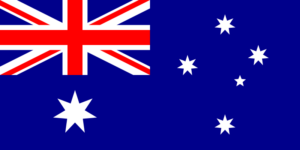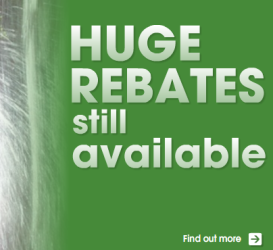Australia: Reasons for the Slowdown of the Solar Thermal Market
November 1, 2010
In Australia, solar water heating systems are more and more overshadowed by photovoltaic installations. According to Chris Mundy, General Manager – Renewable Energy at Rheem Australia, the solar thermal market is going to decrease by around 30 % this year compared to the boom year 2009 with around 420,000 m2 of newly installed collector area. Rheem is the market leader in solar thermal in Australia. It has two major brands: Solahart and Edwards.
Photo: Solahart
There are several reasons for the slowdown:
- First, the federal Solar Hot Water Rebate Program, which granted AUD 1,600 for the installation of a residential solar thermal system since July 2007, was halted on 19 February 2010. One day later, the government launched the new Renewable Energy Bonus Scheme, with a reduced rebate of only AUD 1,000 for every residential solar water heater replacing an electric storage system. And, in January 2010, the New South Wales rebate was reduced from a maximum of AUD 1,200 to AUD 300.
- The second reason is the boom on the photovoltaic market. Since the introduction of the feed-in tariff, which pays 0.40 AUD/kWh for up to 5 kW over 15 years, in Western Australia on 1 August 2010, almost all states in Australia have introduced this kind of PV subsidy. Although not all feed-in tariffs are optimally designed, the new frame conditions started a run on solar electricity, which has slowed down the demand for solar thermal this year. However, the latest news from New South Wales might change the market situation at least in this state. On 28 October, the NSW Government reduced the tariff rate from 0.60 AUD/kWh to 0.02 AUD/kWh, because the first milestone of 50 MW had been reached. Customers who have connected their PV installations to the grid by 27 October 2010 will not be affected by the tariff change. The scheme is now capped at 300 MWp.
- There is an imbalance in the Renewable Energy Certificates scheme between solar PV and solar thermal. “For PV installations up to 1.5 kW, the RECs are multiplied 5 times, whereas solar water heaters only receive the normal ‘times 1 value’,” Stephen Cranch, Sales and Marketing Manager at Rheem Australia, explains. Therefore, a 1.5 kW system with 31 RECs has actually a value of 155 RECs. This imbalance was introduced in June 2009. According to Cranch, the PV multiplier will most likely be reviewed and may be reduced for all systems, but not before some date in 2011.
- And the fourth reason for the slowdown is the fall in REC prices in 2010 – on average, by an equivalent of AUD 300 per family-sized solar water heater. In absolute figures: Last year, a typical family installation could reach a REC rebate of AUD 1,300, which has fallen to AUD 1,000 this year.
Rheem Australia is considering incorporating photovoltaic components and systems into its product range in response to the PV boom. “We experience an increasing interest in photovoltaic by our clients from the installation business,” explains Stephen Cranch. One way to keep them with Rheem Australia is to offer them PV, as well as solar thermal solutions.
More information:
http://www.solahart.com.au/


